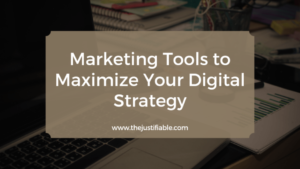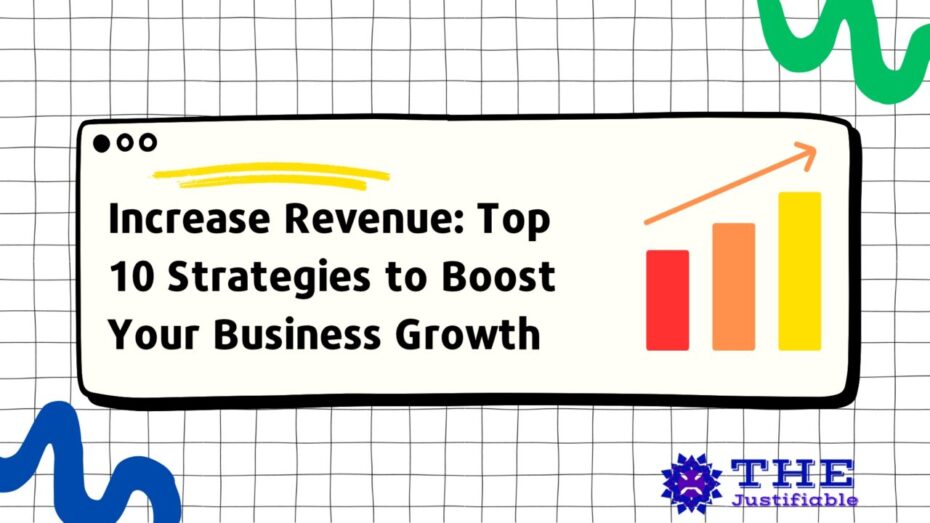Are you curious about how to get into blogging for money but not sure where to begin? Wondering how successful bloggers turn their passion into a profitable income stream?
This guide will walk you through every essential step, showing you exactly how blogging can become a lucrative opportunity. We’ll cover everything from setting up a blog to the monetization strategies that work best.
Let’s dive into the details of blogging for money and help you get started.
Setting Up Your Blog For Success
Starting a blog for money begins with setting up a strong foundation. This section covers essential steps to launch a blog that stands out, with every detail optimized to attract and engage readers, setting you up for profitable blogging.
Choosing The Right Blogging Platform
Selecting the right platform for your blog is crucial for ease of use, customization, and growth potential. I suggest exploring popular platforms like WordPress, which offer flexibility and control, or simpler ones like Wix if you’re looking for convenience.
Think about your goals. If you plan to monetize heavily, WordPress might be the best choice, given its vast plugin ecosystem. Platforms like Blogger or Squarespace are also options, though they may limit certain customizations crucial for monetization.
Your blogging platform should align with your needs and expertise. If you’re new, look for an intuitive platform that helps you publish and manage content smoothly. The right platform choice can save you time and effort as you grow.
Overall, choosing the right platform sets the stage for long-term success, so take your time, research, and select a platform that suits your blogging vision.
Selecting A Profitable Blog Niche
Choosing a profitable niche can make all the difference in blogging. I recommend focusing on niches with proven demand, like personal finance, health, or lifestyle. When your niche has demand, your chances of earning revenue through traffic grow.
Consider your interests and expertise. A niche you enjoy keeps you motivated long-term, which is essential. I suggest researching popular topics and competition levels to find a balance between passion and profitability.
Validate your niche with keyword research and audience analysis. Look for keyword volumes and competitor blogs to ensure there’s an audience for your topic. A good niche balances your passion with market demand.
Finally, your niche selection sets the direction of your content, audience, and monetization. Taking time to identify a profitable niche will lay a strong foundation for your blog’s success.
Essential Tools For Blogging Success
Blogging for money requires the right tools to streamline content creation, promotion, and analytics. Essential tools include content management systems, SEO tools, and analytics platforms to help you track your progress.
I advise using WordPress for its versatility and plugin support. You can integrate SEO tools like Rank Math to optimize your content effortlessly. Additionally, email marketing tools like Mailchimp are valuable for building a subscriber base.
Tools for social media scheduling, like Buffer, can help you reach a broader audience. Also, using Kissmetrics is key to understanding visitor behavior, allowing you to adjust strategies based on what works best.
Investing in quality tools might seem unnecessary initially, but they become invaluable as your blog grows. The right tools save time and help you operate efficiently.
Creating An Attractive Blog Layout
Your blog’s design plays a big role in attracting and retaining readers. A clear, attractive layout invites visitors to explore more, and I recommend keeping it simple yet engaging for a better user experience.
Focus on user-friendly navigation. Use a clean menu and a readable font to enhance readability. Your layout should make it easy for readers to find key sections like blog posts, categories, and contact information.
Consider incorporating visuals to break up text and improve engagement. Use high-quality images, infographics, or videos that complement your content, enhancing both the look and readability of your blog.
Mobile-friendliness is essential since many readers browse on mobile. Ensure your blog’s layout adjusts seamlessly across devices, creating a consistent experience for all users.
Crafting High-Quality Content That Attracts

Creating valuable content is the core of blogging for money. Quality content keeps readers engaged and returning for more. The following steps help you write posts that attract attention and deliver genuine value, building a loyal audience.
Writing Engaging And Informative Blog Posts
Effective blog posts should both inform and engage. I suggest starting with a catchy introduction that hooks readers. Use relatable language, addressing common questions and concerns to keep readers interested.
Break up content with subheadings and bullet points for readability. Long paragraphs can overwhelm readers, so keep them concise. Engaging content is clear, easy to digest, and flows naturally from one point to the next.
Add personal anecdotes or examples to make your points relatable. Readers enjoy learning from real experiences, and including your insights enhances the value of your posts, making them more memorable.
Lastly, end with a call-to-action, inviting readers to leave comments or share your post. Building a community around your content encourages interaction, strengthening your blog’s audience.
Conducting Keyword Research For Blogging
Keyword research is fundamental for blogging. Start by identifying keywords relevant to your niche, focusing on phrases readers are likely searching for. I recommend using tools like Semrush or Google Keyword Planner for this purpose.
Look for keywords with decent search volume and manageable competition. Targeting long-tail keywords can bring in more specific traffic, often leading to higher engagement. Keywords guide your content direction and help attract organic visitors.
Strategically place keywords in titles, headers, and within the content. Avoid overloading your posts with keywords; instead, use them naturally to maintain readability. Search engines prefer content that reads smoothly and is informative.
Continuously refine your keyword strategy. Regularly update keywords based on trends and changing audience interests to keep your content relevant and visible.
Understanding SEO Basics For Blogging
SEO is crucial for making your blog visible on search engines. Start with on-page SEO elements like optimized titles, meta descriptions, and image alt tags. These details make a big difference in how search engines rank your content.
Incorporate keywords strategically in your content. However, focus on readability; keyword stuffing can harm SEO rather than help it. The goal is to make your blog posts valuable and appealing to both readers and search engines.
Link-building enhances your blog’s credibility. I suggest including internal and external links where relevant to add depth and authority to your content. Quality backlinks also boost your search rankings over time.
Regular SEO audits help maintain your blog’s visibility. Use tools like AIOSEO or Yoast SEO to monitor and adjust SEO elements, ensuring your blog remains optimized and competitive.
Creating A Consistent Content Schedule
Consistency in posting builds trust with your audience. I recommend setting a realistic publishing schedule, whether it’s weekly, biweekly, or monthly, so readers know when to expect new content from you.
A content calendar can help you plan topics ahead, ensuring you cover various areas in your niche. Planning ahead also reduces stress and keeps your content organized and focused on your blogging goals.
Stay flexible but prioritize quality over quantity. If you need extra time to produce well-researched content, take it. Consistent, high-quality posts are more valuable than frequent, rushed ones.
Establishing a routine helps build momentum, keeping you motivated and engaged. Your audience will appreciate the regular updates, and consistency plays a big role in growing a dedicated readership.
Building And Growing Your Blog Audience
Expanding your blog’s audience is key to blogging for money. More readers mean more opportunities to monetize, making this stage vital. The steps below outline effective methods for increasing traffic and building a loyal following for your blog.
Utilizing Social Media For Traffic Growth
Social media offers a powerful way to drive traffic to your blog. I suggest starting with platforms where your audience is most active, like Instagram, Twitter, or LinkedIn, allowing you to share blog updates and engage with followers.
Creating shareable content is essential for social media success. Make posts visually appealing and easy to read. I advise including compelling captions and hashtags to boost visibility and reach readers interested in your blog’s niche.
Regular interaction with followers builds engagement. Respond to comments and messages, as personal connections increase reader loyalty. Engaging content combined with interaction encourages readers to visit your blog regularly.
Leverage social media scheduling tools like Buffer to stay consistent. Posting frequently keeps your blog in front of followers, increasing the chances they’ll click through to read your latest posts.
Growing Your Email Subscriber List
Building an email list gives you direct access to your readers, making it a powerful tool for engagement. I recommend creating a sign-up form on your blog, offering incentives like free guides to encourage subscriptions.
Consistent email newsletters keep your readers informed about new content. I suggest crafting emails that are friendly and personal, offering tips, updates, and exclusive insights to make subscribers feel valued and engaged.
Segment your list based on reader interests. If certain subscribers enjoy specific topics, cater your emails to those preferences, increasing the chances they’ll click through to your blog content.
Encourage interaction in your emails by including call-to-actions, like sharing opinions or replying with questions. Building a dialogue with your readers strengthens their connection to your blog.
Networking With Other Bloggers
Connecting with other bloggers is a fantastic way to grow your audience. I recommend reaching out to bloggers in similar niches, as collaborations can introduce your blog to their readers, expanding your reach organically.
Consider participating in online blogging communities. Forums and social media groups allow you to share tips, exchange ideas, and create connections, leading to potential guest post exchanges or shout-outs.
Collaborations bring fresh perspectives to your blog. Invite bloggers for joint projects or interviews, introducing their followers to your work. These mutual efforts can attract a new, engaged audience to your site.
Building genuine relationships takes time, so approach networking authentically. Rather than focusing solely on promotion, aim to add value and form meaningful connections within the blogging community.
Leveraging Guest Blogging Opportunities
Guest blogging is an excellent strategy to expand your audience. I suggest identifying reputable blogs in your niche where you can offer valuable content, drawing their readers’ attention to your blog.
Crafting high-quality guest posts helps establish your authority. Choose topics that align with the host blog’s audience, showcasing your expertise while naturally mentioning your blog as a resource for readers seeking more insights.
Include a strong call-to-action in your author bio. Direct readers back to your blog for further information, inviting them to explore more of your content. This tactic can effectively drive new traffic.
Approach guest blogging consistently. Regular contributions to trusted sites help build your online presence, leading to more recognition and a steady influx of new visitors to your blog.
Proven Ways To Monetize Your Blog Effectively

Monetizing your blog is the ultimate goal in blogging for money. There are various profitable methods to explore, each with unique benefits. The following sections cover the most effective ways to earn income from your blog.
Affiliate Marketing For Blogging Income
Affiliate marketing is one of the most popular ways to make money blogging. I recommend partnering with reputable affiliate programs that align with your niche, offering products or services your readers genuinely find valuable.
When promoting affiliate products, focus on genuine recommendations. Readers trust authentic insights, so share personal experiences to make your endorsements relatable, which can lead to higher conversion rates.
Integrate affiliate links naturally within your content. Placing links in relevant spots, like product reviews or resource pages, helps avoid a salesy feel, making readers more likely to click through and purchase.
Track affiliate performance regularly. Monitoring which links perform best helps you refine your strategy, focusing on promotions that drive the most revenue for your blog.
Sponsored Posts And Brand Collaborations
Sponsored posts are a lucrative way to monetize as your blog grows. I suggest reaching out to brands that align with your niche, offering content that highlights their products or services in a way that adds value to your readers.
When creating sponsored content, keep your tone authentic. Readers appreciate honest insights, so share how the product benefits you, making the post feel natural and engaging, rather than purely promotional.
Negotiate terms carefully to ensure fair compensation. Understand the brand’s expectations, including content type, posting frequency, and specific calls-to-action, ensuring it aligns with your blogging style.
Include a disclosure for transparency. Readers respect openness, and being upfront about sponsored content strengthens trust, making them more likely to engage with your recommendations.
Creating And Selling Digital Products
Selling digital products offers a direct way to earn from your expertise. I suggest starting with products like eBooks, courses, or printables that provide value related to your blog’s niche, appealing to readers seeking in-depth resources.
Focus on quality when creating digital products. High-value content can include exclusive tips, guides, or templates. I recommend testing and refining your product to ensure it meets readers’ needs and delivers clear benefits.
Use your blog to promote these products. Write posts highlighting the benefits or providing sneak peeks. Engaging content paired with a strong call-to-action can encourage readers to make a purchase.
Feedback is valuable for product development. Encourage buyers to share opinions, allowing you to refine future products and offer even more targeted resources to your audience.
Using Ad Networks For Passive Income
Ad networks provide a passive income stream as your blog traffic grows. I recommend starting with beginner-friendly networks like Adsterra, which allows you to earn per click or impression without managing ads directly.
Experiment with ad placements for optimal results. I advise placing ads in high-traffic spots, like above the fold or within content, ensuring visibility while maintaining a smooth reading experience.
Avoid overcrowding your blog with ads. Too many ads can disrupt the user experience, so strike a balance between monetization and readability to keep readers engaged and coming back.
Regularly review ad performance. Platforms often provide analytics to track which ads perform best, allowing you to adjust placement or try new networks as your blog audience grows.
Analyzing And Optimizing Blog Performance
Understanding your blog’s performance is essential to maximize success. Regularly reviewing metrics and making improvements will help you reach your goals in blogging for money, ensuring that each effort aligns with audience expectations and business outcomes.
Tracking Key Metrics For Blogging Success
Key metrics provide insights into what’s working. I suggest focusing on metrics like page views, bounce rate, and session duration. These reveal reader engagement levels, helping you understand which content resonates most with your audience.
Traffic sources are crucial. Knowing where readers come from, like search engines or social media, helps you optimize your strategies. Analyzing these metrics will show which platforms contribute most to your blog’s growth.
Conversion rate is also essential. This measures actions like email sign-ups or product purchases. A higher rate indicates successful engagement, while a low rate may signal room for content or design improvements.
Monitoring these metrics consistently gives you a clear view of progress. Regular tracking reveals trends, showing what changes improve performance, helping you refine your approach over time.
Using Analytics Tools To Improve Performance
Analytics tools help you gather and interpret blog data. Google Analytics, for instance, offers a comprehensive view of visitor behavior. I recommend checking metrics like demographics and interests to tailor content effectively to your audience.
Heatmaps show where visitors click most. Tools like Hotjar offer insights into user behavior, revealing what grabs attention and what’s overlooked, guiding your design and content adjustments to enhance engagement.
Set goals within your analytics tool. Define actions you want readers to take, like signing up for a newsletter. Tracking these goals helps you see how effective your calls-to-action are, making it easier to improve engagement.
Regularly reviewing this data helps you spot trends and gaps. Analytics tools can pinpoint areas needing adjustment, making it easier to refine your blog’s strategy to meet evolving reader interests.
Optimizing Content For Higher Engagement
High engagement often leads to better search rankings. I suggest refining your content based on what readers respond to, ensuring it’s well-structured, visually appealing, and offers genuine value to keep readers invested.
Use headings, images, and bullet points. These elements improve readability, allowing readers to scan and engage easily. I find that varied formats help retain attention, increasing time spent on the page.
Incorporate calls-to-action in strategic spots. Prompt readers to comment, share, or sign up for updates. Engaging your audience directly creates a two-way conversation, making them more likely to return.
Experiment with multimedia like videos or infographics. Different media formats appeal to varied preferences, adding richness to your content and improving engagement among diverse readers.
Refining Your Monetization Strategy Over Time
Monetization strategies should evolve as your blog grows. I advise reviewing income sources to see what performs best, whether it’s ads, affiliates, or products. This focus helps you prioritize efforts with the highest returns.
Test new strategies regularly. Try different types of affiliate links, for example, or explore sponsored posts. These experiments help you identify what works without committing fully, allowing flexibility in approach.
Analyze income patterns. Knowing which posts drive revenue helps refine future content around similar topics, aligning your blog’s focus with reader interests and profitability.
Adjust based on audience feedback. Readers’ preferences evolve, so periodically revisiting your monetization tactics ensures alignment with their needs, keeping them engaged and contributing to consistent growth.
Avoiding Common Blogging Mistakes

Blogging mistakes can hinder growth, especially when starting. Avoiding these errors helps you maintain credibility, engage readers, and set your blog up for success, ensuring you achieve your goals in blogging for money.
Mistakes To Avoid When Starting Blogging
Starting without a clear plan is risky. I recommend creating a content calendar, mapping out your niche, and setting specific goals. A strategic start ensures a smoother path toward building readership and generating income.
Ignoring SEO is another mistake. Basic SEO practices, like keyword usage and internal linking, help your blog get noticed. Learning these essentials from the beginning sets your content up for higher search visibility.
Inconsistent posting disrupts audience growth. I suggest setting a realistic schedule you can maintain, as regular updates keep readers coming back and establish a dependable presence in your niche.
Trying to cover too many topics dilutes your focus. Stick to a specific niche or theme, allowing you to develop authority and attract readers interested in that area, which is crucial for growth.
Pitfalls In Monetizing A New Blog
Rushing into monetization can alienate readers. I suggest focusing on content quality initially, as building trust with readers makes them more receptive to your eventual monetization efforts.
Overloading with ads hampers user experience. I recommend starting with minimal ads, prioritizing content quality. Too many ads make your blog feel cluttered, reducing reader engagement and retention.
Ignoring audience interests limits revenue potential. Understanding what your readers want ensures that affiliate links, sponsored posts, and other monetization methods genuinely align with their needs, increasing conversions.
Inadequate disclosure can harm credibility. I always advise transparency regarding sponsored content, as honesty with readers fosters trust, making them more likely to engage with your monetization efforts.
Balancing Content Quality With Monetization
Monetization should enhance, not hinder, content quality. I believe in prioritizing reader value in every post, ensuring that content doesn’t feel sales-driven or overly promotional, keeping your audience engaged.
Strategic placement of ads and links maintains readability. Avoid cluttering content with excessive links; place them naturally where they enhance the topic, making monetization a seamless part of the reader experience.
Providing high-quality information builds loyalty. Readers are more likely to support blogs that genuinely offer value. By balancing content and monetization, you create a blog that readers enjoy and return to frequently.
Test monetization strategies for user impact. Experimenting with ads or affiliate placements lets you gauge reader responses, refining the balance between quality and income, ensuring both goals are met.
Staying Motivated And Consistent In Blogging
Consistency and motivation are key for sustained success in blogging. Maintaining a steady rhythm ensures readers stay engaged, while personal motivation keeps you committed to achieving long-term blogging goals.
Setting Realistic Blogging Goals
Realistic goals provide direction without overwhelming you. I recommend setting milestones, like weekly post targets or monthly traffic goals, which make progress manageable and keep you motivated without feeling pressured.
Track your achievements to stay motivated. Small wins, like a growing subscriber list, remind you of progress and keep you moving forward. Tracking allows you to celebrate improvements, boosting confidence along the way.
Set both short-term and long-term goals. Short-term goals build momentum, while long-term goals guide your vision. This blend ensures you stay motivated daily while working toward bigger accomplishments.
Revise goals periodically. Adjusting targets based on your blog’s growth keeps them relevant, ensuring each goal aligns with current needs and challenges, maintaining motivation and focus on what matters.
Managing Time And Overcoming Writer’s Block
Effective time management prevents burnout. I suggest setting dedicated blogging hours, balancing content creation with other responsibilities, ensuring you’re productive without feeling overwhelmed.
Overcoming writer’s block requires flexibility. Try switching topics or taking short breaks to refresh your mind, helping you return with a clear perspective and renewed creativity.
Create a content backlog for busy days. Having posts ready helps you maintain consistency even when time is tight, reducing pressure and keeping your blog active with minimal stress.
Experiment with new topics or formats to stay inspired. Writing in a different style or exploring fresh ideas can spark creativity, making blogging feel engaging rather than routine.
Celebrating Milestones And Measuring Progress
Milestones offer motivation and a sense of accomplishment. Celebrate small victories, like reaching a set number of posts, as these moments reinforce your dedication and commitment to your blogging journey.
Review progress regularly. Use analytics to track engagement and growth, seeing what resonates most with readers. Monitoring these trends helps you adjust strategies, aligning with what works.
Share milestones with your audience. Letting readers know about your achievements fosters a sense of community, encouraging them to celebrate with you and reinforcing their connection to your blog.
Setting new milestones keeps your journey dynamic. Each goal you reach motivates you to set higher targets, pushing your blog to new levels and keeping your blogging momentum strong.
Sustaining Long-Term Blogging Success
Consistency is crucial for long-term success. I suggest maintaining a posting schedule that balances quality and quantity, keeping readers engaged without compromising content standards.
Staying updated with trends keeps your content relevant. Blogging evolves, so following industry trends ensures you continue delivering valuable information, keeping readers interested over time.
Focus on improving continually. Regularly refining your approach, from content style to monetization methods, keeps your blog fresh and adaptable, supporting sustained growth and success.
Personal fulfillment keeps you going. Enjoying the blogging process itself—connecting with readers, sharing insights, and seeing progress—makes the journey enjoyable and rewarding, fostering long-term motivation.






